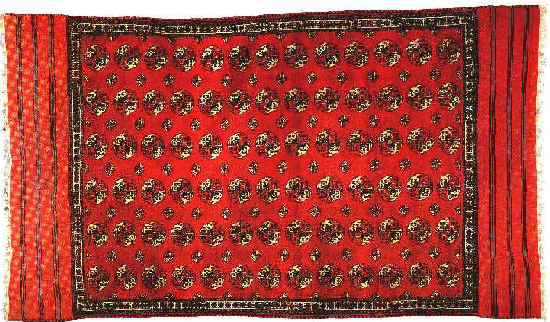|
|
On classification of Turkmen designs, before preparation a list of similar origins, it is necessary to have an explanation about similarity.
In other fields, experience proves, that similarity is not an effect of one factor, but sometimes, many factors create the design origin, nearing or getting away during tribal evolution and taste-trying.
It is possible that the appearance of some designs, resembles each other, while they have been resembled during a trend of evolution and the motive of design has not been the primary object as inspiration of that design.
For example, neck of a camel, flint and metal hook have all metallic curve, but have no similarity to each other. In evolution of designs derived from those three objects, we may reach to three similar designs or rather equal, while Turkmen have reached to this point in this respect; in fact, problem is much more expanded.
Flower is one of designs used in Turkmen carpets, in more than twenty different images appropriated to special form in various tribes, what we could find in all Turkish language tribes called as "Gul" and in Persian language and clans as "Howz".
Turkmen "Gul" (flower) is the same Iranian medallion, which is repeated in designs of Turkmen carpet. This sort of design, i.e. design of repetitive flowers (double medallion), has been in vogue until short of Timurid era, un expensive carpets of Court of Iran, also is seen in miniatures of 15th to 17th century A.D.
Nowadays, Turkmen flowers are in two categories. First group are very similar to each others, so that if compare them, we come to conclusion that probably they are from same unique origin and their separation is due to tribal taste-trying. Next group are those flowers, having no similarity to other flowers, perhaps they had separate source, such as: Flint, Khastaz and Taviz.

Salor Tribe: 2.70x4.80 m, (18-19th century)
|
|

